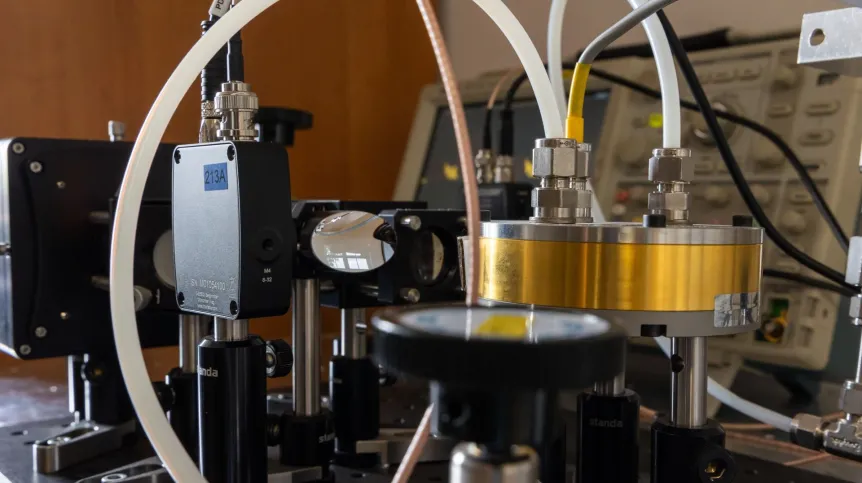
A laser methane sensor based on the absorption of optical radiation in the long-wave infrared and which may help search for extraterrestrial life as well as be used to monitor environmental pollution and in medicine has been developed by scientists at the Military University of Technology in Warsaw.
'Longer waves penetrate more effectively through obscuring layers, such as aerosols and dust, which may be an important advantage when researching the atmosphere of various planets, for example Mars', says Col. Dr. Jacek Wojtas from the university’s Institute of Optoelectronics.
He explains that methane is considered a by-product of the decomposition of organic matter, and its presence in the planet's atmosphere is treated by scientists as the first evidence of life. However, detecting this gas is not easy because it usually occurs in trace amounts. The sensors used for this should therefore be extremely precise.

These requirements are met by optical methods that use the phenomenon of absorption of laser radiation to measure trace gas concentrations. They offer very fast measurements, large dynamic ranges and high selectivity. Moreover, thanks to differential measurement procedures, periodic calibrations and replacement of worn parts are not required. Thanks to the latest developments in optoelectronic technologies, optical sensors can be compact and energy-efficient.
Space and health
'Methane is a very important substance because it is a component of natural gas, used as a fuel source for electricity generation and heating, and the second most common greenhouse gas after carbon dioxide, responsible for over one third of today's anthropogenic climate warming', says Dr. Wojtas.
It is estimated that up to 23 percent volume of global anthropogenic methane emissions in 2020 came from coal mining. Methane is released into the atmosphere to reduce the risk of explosion. It may also come from natural sources such as wetlands, or be generated by human activities, including agriculture and wastewater management.
Methane is also an important component of the air exhaled by humans, which may indicate disease states such as intestinal dysbiosis, chronic pancreatitis, functional flatulence, diarrhoea, constipation and suspected malabsorption syndromes. Therefore, sensitive and reliable sensors are needed to accurately monitor environmental pollution, ensure its purity as a fuel, locate leaks in transmission pipelines, and diagnose human diseases through breath analysis.
New devices made of domestic components
Currently used optical methane detection instruments mainly use the shortwave and midwave infrared spectral range. The results of the first demonstration of detecting small amounts of methane in long-wave infrared are reported in the journal Measurement.

Scientists from the team led by Dr. Wojtas identified a previously unused absorption band, achieved a detection limit of 0.063 ppb (parts per billion) with a short averaging time of 28.1 seconds, and selectivity nearly twice as good as in the case of the most frequently used band. Wojtas says that the experimental system enabled the measurement of absorption coefficients in a wide range of wavelengths and for various pressures.
'I would like it to be possible to implement not only the results of these studies, but also many others that we have conducted together with my team. Their goals are always measurable results and utilitarian, as well as striving to develop innovative products made of domestic key components', concludes Dr. Jacek Wojtas.
PAP - Science in Poland
kol/ zan/ kap/
tr. RL













